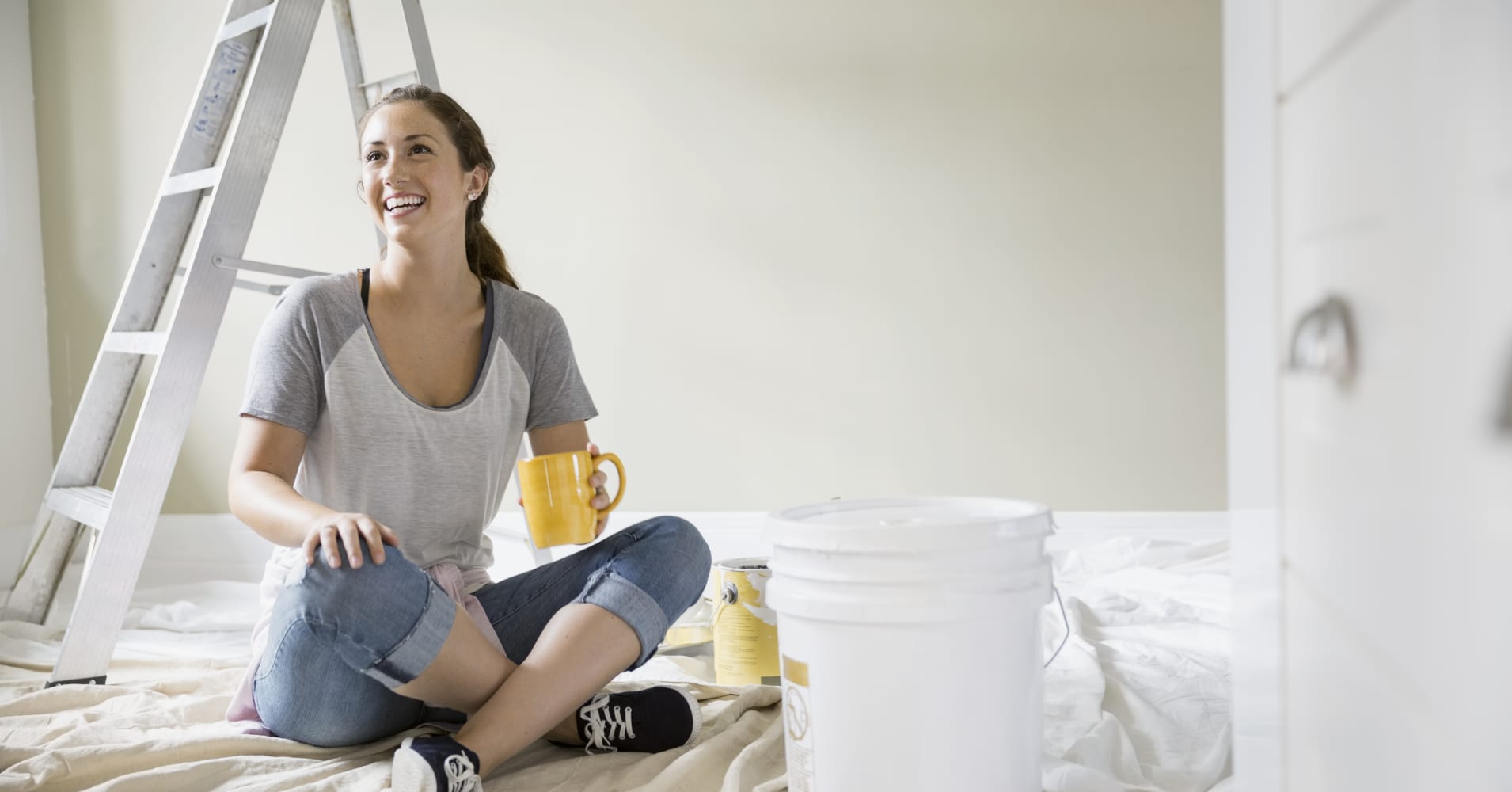
Going the do-it-yourself route on your next home repair or remodeling project could cut costs substantially — that is, provided you're really as handy as you think.
Consumers have DIY-ed some 113 million home improvement projects in recent years, according to a new NerdWallet analysis of Census Bureau data.
NerdWallet looked at data from the Census Bureau's biennial American Housing Survey, which last polled consumers in 2017 on home projects completed "in the last two years." NerdWallet and The Harris Poll also surveyed 2,001 U.S. adults, including 1,353 homeowners, earlier this fall.
Younger homeowners were more likely to tackle projects on their own, with those aged 25 to 29 DIY-ing 59 percent of the time. That could be because student-debt-laden millennials are more apt to find the homes in their price range need work, or because they can't afford to hire out those improvements, said Holden Lewis, a home expert with NerdWallet.
"The younger you are, you tend to be making less money and have less savings, and so you're doing a lot yourself," he said.
There's certainly a financial incentive to tackle home projects solo. Take a bathroom remodel, for example. NerdWallet found the median DIY expense was $1,500, versus $5,500 with a professional.
Of course, the price differences could also speak to the differing scales of those improvements. While 78 percent of homeowners said they would be up for trying a small project on their own, that share shrinks to 40 percent for a complex improvement such as plumbing or electric work.
Consumers were most likely to attempt a do-it-yourself job on a bedroom renovation or landscaping project, per NerdWallet, and least likely to make a solo attempt at repairing or replacing their roof.
That caution is for the best. Accurately gauging your own handiness is crucial before undertaking a repair or renovation on your own, Lewis said.
"People sometimes are overconfident in their ability," he said.
A little more than 4 in 10 homeowners in NerdWallet's report fessed up to botching a DIY home project, and 35 percent said a home improvement show influenced them to take on a project that ended badly.
Here's how to decide whether you should go the do-it-yourself route.
"What's the worst that could happen? Think that through," said Sherry Petersik, who blogs with her husband John at Young House Love about their DIY home endeavors.
With some projects, a miss is no sweat. Mess up painting the bedroom, for example, and you'd need to either repaint or hire someone to do so, with minor losses of money and time.
"Sometimes people are so afraid to try something," Petersik said. "And with many projects, it's not more expensive to hire a pro partway in."
But the worst-case scenario is potentially much scarier with plumbing, electrical or structural work, she said — where you're risking personal injury as well as flood, fire or collapse, respectively. Projects or repairs involving hazardous chemicals, pests or substances like mold carry elevated risk, too.
In such cases, you'd want to more carefully consider whether you have the required skills to do the task safely, Petersik said.
"No amount of saving money is worth a human life being harmed," she said.
A few years ago, Lewis went the DIY route and installed hurricane shutters on his South Florida home. It was only later — when a contractor refused to give him an estimate on updating to energy-efficient windows — that he realized he'd missed a crucial step.
"I didn't realize [that] in my town, I have to get a permit for [installing storm shutters], and submit blueprints," he said.
Don't make that same mistake. Before you start a remodeling project, check in with your city or county, Lewis said.
More from Personal Finance:
These workplace perks could save you a few bucks in 2019
When it comes to your income, consider oversharing
What to watch out for during open enrollment
Depending on the scope of the work, you might need to obtain a building permit or specialty permits, and submit to inspections throughout the construction. Your project will also have to meet the latest building codes, he said. (Those may be different than what you see in an online tutorial or how-to.)
Assessing those details can help you determine whether that home upgrade is something you can really do yourself.
And skipping this step could have financial consequences such as fines, and needing to undo or redo work. Unpermitted work can also make it more difficult to later sell your home, according to legal resource Nolo — or as Lewis found, find a pro to complete future projects.
When you're deciding whether to tackle a project yourself or hire a pro, think about whether the skill is something that you can easily learn and will benefit from knowing, Petersik said. For example, this probably won't be the last time you'll need to paint a wall, hang a picture or shelf, or install a window treatment.
"That skill set will serve you your whole life as a homeowner," she said.
No comments:
Post a Comment